Don’t get lost in the blizzard of jargon!

Do you know a CLI from IMAP? Or FTP from MDM*? These are all fairly common acronyms in the computing world and anyone responsible for company technology could be using any of them on any given day.
Does that mean though that you should be able to talk TCP/IP at the drop of a hat?
Having some knowledge of a topic is rarely a bad thing, but the best managers know that they are not, and can never be, masters of all things. That’s why they employ and manage people who do have specialist expertise.

The trouble is that some people (even whole organisations sometimes) wear their industry lingo as some kind of badge of honour! It’s almost as if they think they sound more expert if the people they’re talking to can’t understand what they’re saying.
The Internet helps. You can look anything up if you feel like you’re missing something, but you can’t do that mid conversation usually and you can’t always be sure you’ve found the correct explanation of the jumble of particular letters that are currently bamboozling you. And it’s one thing to know what the acronym means, but you can’t generally learn in five minutes why it’s important or even why it applies to your systems. It’s enough to make your head explode.
We think that unless an acronym is something widely used and recognised (BBC, SOS, DIY, IT) people shouldn’t be expected to understand it. Much of what we do is highly technical and there’s no denying it helps us to talk to each other, internally, in the shorthand of our sector, but there is nothing in what we do for our clients which cannot be explained in clear terms.
If we can’t tell a client in plain English why they need a service or product, why they have a particular problem or how we are going to improve their systems, we can’t be sure that they have understood what they are buying from us. A breakdown in communication of that nature leads only to trouble in the long term and is good for no-one.
You CAN obtain information technology expertise and services without the fear of being hoodwinked by jargon – you just have to deal with the people who don’t hide behind a blizzard of letters.
No acronyms were harmed in the writing of this blog:
- CLI = Command Line Interface (a way of talking to computers by typing instructions as words rather than pointing and clicking with a mouse)
- IMAP = Internet Message Access Protocol (standard rules and instructions for email software to retrieve messages from a mail server)
- FTP = File Transfer Protocol (widely used protocol for passing files between a computer or other device and a server on a network e.g. uploading new pictures to a web server)
- MDM = Mobile Device Management (software that allows a system administrator to set company-wide controls on mobile devices like tablets, smartphones and laptops)
- TCP/IP = Transmission Control Protocol/Internet Protocol (the core of the internet, this a a standard allowing for reliable, ordered and error-checked data to pass through networks, wherever they are in the world)
